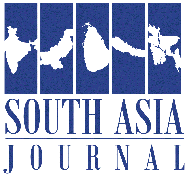 Family, religion and peer group have traditionally shaped social values. Today, the impact of the media surpasses all three, from the giant TV screen in your living room to the little gizmo in your pocket, your link to the wide world.
Family, religion and peer group have traditionally shaped social values. Today, the impact of the media surpasses all three, from the giant TV screen in your living room to the little gizmo in your pocket, your link to the wide world.
Good thing? Bad thing? Who knows?
The media are part of modern society like government, political parties, universities and the Church. As such, they are “structures” of society, their purpose being to diffuse information, to assist in the exchange of ideas, values and attitudes, as well as promote certain market policies and ideologies about modern life.
To this end, the media depend greatly upon technology (the more sophisticated the technology, the more pervasive the media impact), finances (the global diffusion of information and entertainment requires a similar outreach in financing), and the creative abilities of a host of writers, technicians, artists and distributors.
Therefore, the media are in themselves neither good nor bad. They are ambivalent, that is, they have a dual value system.
Naturally, most human beings are more inclined to what is “bad” when that is portrayed in a glamorous and attractive fashion than to what is “good” when that is presented not so attractively.
Nevertheless, the same media that indoctrinate us with regard to sex, violence and consumerist values have also promoted ecology, human rights and the values of integrity and self-sacrifice (Pope Francis, Mother Teresa, Nelson Mandela, Greenpeace…).
We are always somewhat ambivalent about the attitudes promoted by the media, as they are generally seen as an “outside force” and therefore beyond our control.
The traditional forces shaping values in society were familial contact, religion and peer pressure. Each of these forces interacted with each other, and in a way, neutralized each other.
Today, the media have appeared as a fourth force, with a power and allure that far surpasses that of the other three. This is perhaps the source of our disquiet — “what are they doing to our youth?” “They are indecent and in conflict with our cultural values.”
Most Indians feel strongly that their culture is “spiritual, ethical, and filled with self-control,” whereas the West is “opportunistic, materialistic and sensual” — surely a one-sided view of each!
For it is this self-same Indian culture today which is known for its gross violence against women and the poor (bride burning, female infanticide, lynching of Dalits and tribals, etc.), rampant corruption (India is ranked as the seventh most corrupt country in the world), and hypocrisy.
Surely these are not the values we espouse, but they are very much part of Indian culture, and have been so for centuries.
This is not to condone “the materialism, sensuality and opportunistic behaviour “ of Western societies, as seen through its media, but also to remember that there is also place for democratic participation, honesty in work, the spirit of scientific enquiry, concern for human rights as part of Western culture, revealed through the media.
What is becoming more and more acknowledged, however, is the increasing role of media technology in almost every area of life, whether at home or work.
How many of us can do without a smartphone in our pockets or a computer on our desks?
In this, the media have displaced the traditional patterns of communicative interaction, which consisted of conversation, storytelling, face-to-face exchange, and the rites of hospitality, such as are found in all traditional societies, and even in modern ones today.
The accent now is less on the personal skills of negotiation and exchange and more on the latest information technology, which replaces the need to be human!
In other words, we are slowly becoming “media-rich” and “communication poor.” This trend, already observable in the affluent West, is seeping across other parts of the world too.
A critical awareness of the media and its impact is desirable for all, especially for the young. We call this “media education,” understanding by this a process of observation of media messages, leading to an analysis of the cultural forms used by the media.
These reactions may lead to organizing for better quality programs or resisting stereotypical presentations in the media. In all this, the central human value is the freedom to choose.
The article appeared in the ucanews
